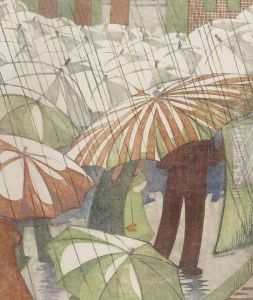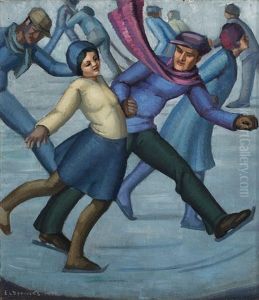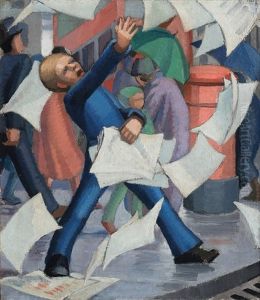Ethel Spowers Paintings
Ethel Louise Spowers was an Australian artist born on July 11, 1890, in Melbourne. She was the daughter of William Spowers, who owned the newspaper 'The Age', and his wife, Eva. Spowers was educated at the Clyde Girls' Grammar School in St Kilda and later attended the National Gallery of Victoria Art School from 1908 to 1911. Initially, Spowers worked mainly in the medium of painting and drawing, but her artistic career is most notably marked by her contributions to the field of modernist printmaking.
In the 1920s, Ethel Spowers traveled to Europe, where she continued her art education. She studied at the Westminster School of Art in London under the tutelage of British artist Cyril Power. It was during this time that she became influenced by the Vorticist movement and the bold, dynamic forms of Futurism, which would later be reflected in her work. In 1929, Spowers joined the Grosvenor School of Modern Art in London, where she learned the art of linocutting from Claude Flight, who was a key proponent of the linocut medium. Flight's emphasis on the linocut technique as a democratic and accessible form of art making had a significant impact on Spowers.
Under Flight's guidance, Spowers quickly became adept in the linocut technique and began to produce vibrant, rhythmic prints that reflected the energy and movement of modern life. Her works often depicted scenes of everyday activities, children at play, and the hustle and bustle of urban settings, characterized by bold, simplified forms and a bright, clear palette. Spowers was an active participant in the exhibitions organized by the Redfern Gallery in London, where the Grosvenor School artists frequently showed their work.
Spowers returned to Australia in the early 1930s, where she continued to produce and exhibit her prints, becoming a significant figure in the Australian art scene. She was instrumental in promoting the modernist style and the linocut technique in her home country, influencing other Australian artists and contributing to the development of modern art in Australia. Spowers also engaged in social commentary through her art, addressing issues of women's rights and the impacts of industrialization.
Ethel Spowers' work was exhibited internationally during her lifetime, and she was a member of the Contemporary Art Society in Melbourne. Despite her success, her career was relatively short, as she died at the age of 57 on May 5, 1947, in Melbourne. Today, her prints are held in major collections around the world, including the British Museum, the National Gallery of Australia, and the National Gallery of Victoria, and she is remembered as a pioneer of the modernist print movement in Australia.


